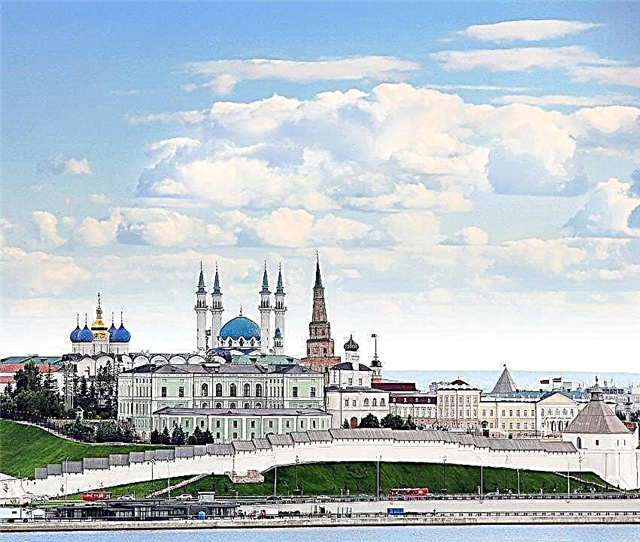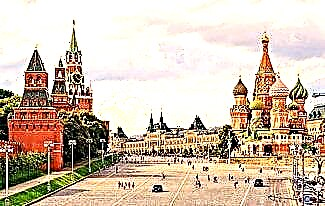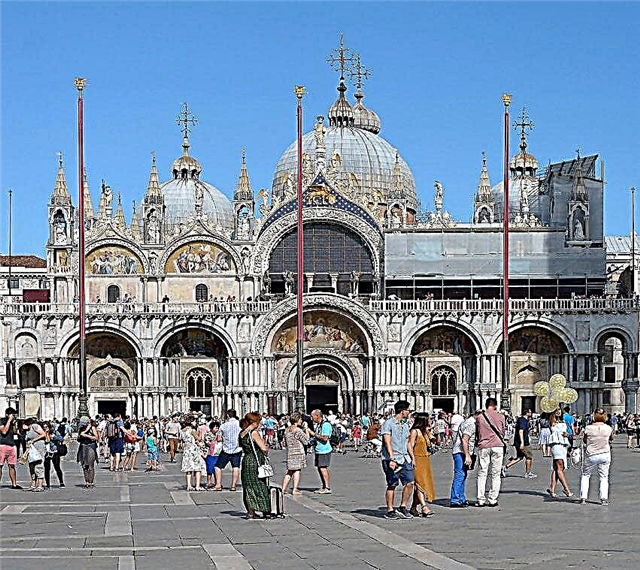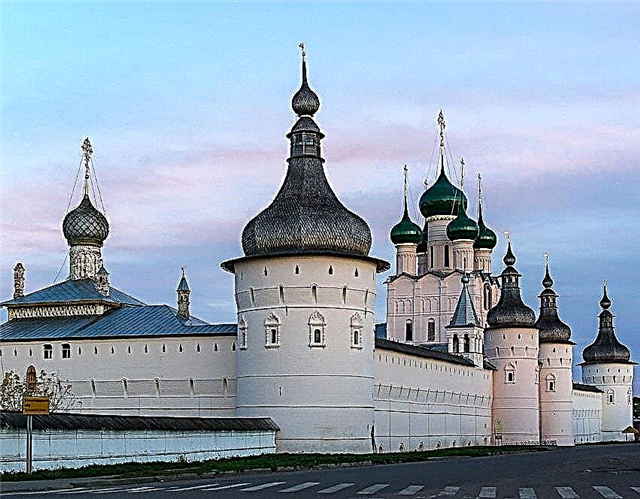The American police are controversial, as is probably any law enforcement agency in the world. The cops (they call them that either because of the abbreviated Constable-On-the-Post, or because of the metal from which tokens for the first police officers were made, because copper in English is "copper") really do not take bribes. You can ask them for directions or get any advice within their competence. They “serve and protect,” arrest and harass, appear in courts and issue fines on the roads.
At the same time, the police in the United States is an institution closed from society, despite all the efforts of this society to make its work transparent. Ugly cases of police officers, exposed either by the FBI or by nosy journalists, regularly surface in different states. And when they surface, it turns out that dozens of people are involved in criminal police communities. The bribes are in the tens of millions of dollars. There are dozens of victims of the mafia in black uniforms. But the scandals fade away, another film about the plight of an ordinary detective comes out on the screens, and a guy in a cap getting out of a white-blue car again becomes a symbol of law and order. What is it like in reality, the American police?

1. After the terrorist attacks on September 11, 2001, the United States passed a number of laws that reformed law enforcement agencies. They tried to collect them under the roof of the Department of Homeland Security at least at the federal level. It worked badly - apart from the IMB, “own” law enforcement officers remained at least in 4 ministries: defense, finance, justice and the postal department. At the grassroots level, everything remained the same: city / district police, state police, federal structures. At the same time, there is no vertical subordination of police bodies. Interaction at the horizontal level is poorly regulated, and the departure of a hiding criminal to the territory of another state quite helps, if not to avoid responsibility, then to postpone it. Thus, the American police are thousands of separate units, interconnected only by telephone and common databases.

2. According to the US Department of Statistics, there are 807,000 police officers in the country. However, these data are obviously incomplete: on the website of the same Department of Statistics, in the section “Similar professions”, criminologists are indicated who, for example, in Russia are part of the structure of the Ministry of Internal Affairs and are taken into account on a par with patrol officers and generals. In total, 894,871 people serve in the Russian Ministry of Internal Affairs.

3. The median salary of an American police officer in 2017 was $ 62,900 per year, or $ 30.17 per hour. By the way, cops are paid for overtime with a coefficient of 1.5, that is, an hour of overtime is one and a half times more expensive. The Los Angeles Police Commissioner will receive $ 307,291 in 2018, but in Los Angeles police salaries are much higher than the US average - at least $ 62,000. The same picture in New York - an ordinary cop with 5 years of experience makes 100,000 a year.
4. Do not repeat the frequent mistake of film translators, who often call police officers “officer”. Their rank is indeed "officer", but this is the lowest rank in the police, and it does not correspond to the Russian concept of "officer". It is more correct to say “police officer” or simply “policeman”. And the police also have captains and lieutenants, but there is no clear division into privates and officers - everything determines the position.
5. The trend of recent years: if before serving in the army was a plus when entering the police, now the police experience is appreciated when being accepted into the army. In some states, police officers, even under threat of dismissal, refuse to work in problem areas. Police departments have to introduce special surcharges. "Combat" can be up to $ 10 per hour.
6. The American police do, when arrested, read out to the arrested person his rights (the so-called Miranda Rule), and the standard formula does contain words about providing a lawyer for free. The rule is somewhat disingenuous. A lawyer will be provided only before the start of the trial. During the preliminary investigation, you cannot get a free lawyer's assistance. And the Miranda Rule is named after a criminal whose lawyer managed to cut his sentence from life to 30 years, claiming that his client, before he began to write a dozen pages of frank confession, was not informed of his rights. Miranda served 9 years, was released on parole and 4 years later was stabbed to death in a bar.

Ernesto Miranda

Now the detainee will be read his rights
7. In the USA there is no our analogue of the institution of witnesses. The courts trust the word of the police officer, especially the testimony under oath. The punishment for lying in court is very harsh - up to 5 years in federal prison.
8. On average, about 50 police officers now die from intentional unlawful acts a year. In the early 1980s, an average of 115 police officers died each year. Even more impressive is the decline in terms of 100,000 police officers (the number in the United States is growing quite rapidly) - 7.3 police killed per year against 24 in the 1980s.

9. But the cops themselves kill much more often. Moreover, there is no official statistics - each police department is independent and provides statistics at the request of the leadership. According to press estimates, in the first decade of the 21st century, about 400 people died annually from the use of violence by the police (not only shot Americans, but also those who died from an electric shock, from health complications during detention, etc.) were killed. Then a sharp increase began, and now a year the defenders of law and order send about a thousand people to the next world.

Handcuffs are no longer needed ...
10. The first black police officer in the United States appeared in the early 1960s in Danville, Virginia. Moreover, there was no discrimination in hiring - black candidates simply did not pass the educational selection (but there was segregation in education). Now the composition of the New York police force roughly corresponds to the racial composition of the city's population: about half of the police are white, the rest are from minorities. The Los Angeles Police Department sponsored Lethal Weapon, which featured white and black cops working in pairs.

11. The post of chief of police in the United States is an exclusively political position. In small towns, he may even be elected by universal suffrage, as mayor or city councilors. But most often the chief is appointed by the mayor. Sometimes with the approval of the city council or the state legislature, sometimes by sole decision.
12. The current mayor of New York, Bill de Blasio, is fighting police corruption in an original way. Police officers change their specialization every 4 months. Patrolmen become investigators, while those, on the contrary, go to polish the sidewalks and practice driving a car with a "chandelier". The mayor can afford not that - thanks to the efforts of Rudolph Giuliani, crime has decreased so much that Michael Bloomberg also carelessly served two terms in the mayor's chair, and for de Blasio, some of this grace still remained. The number of delinquencies is gradually increasing, but the level of the early 1990s, when Giuliani began his war on crime, is still a long way off.

Bill de Blasio knows a lot about police work
13. The arrest plan and other statistical delights are not at all a Soviet or Russian police invention. In 2015, New York City Police Officer Edward Raymond refused to carry out a plan for the number of arrests issued by his superiors. It turned out that this figure is communicated to every patrol officer, regardless of the area in which he works. For minor offenses, only blacks were to be detained. They tried to hush up the case, but Raymond is black, and the police commissioner and the mayor are white. Amid racial unrest, the authorities had to create a commission of inquiry, but the results of its work are still pending.

14. Reporting is the same scourge for guys with octagonal tokens, as well as their Russian colleagues. On average, it takes 3-4 hours to formalize one detention of a petty offender. If the case has come to a real trial (and about 5% of cases come to it), dark days come for the policeman.
15. The burden on the police is quite large, so all these cavalcades of cars with flashing lights, familiar from the films, are put forward on a call only in case of an “emergency” - an emergency. For example, they are pounding on your door right now, etc. When you call that something was stolen from you in your absence, a couple of patrolmen will arrive slowly, and perhaps not today.
16. Cops retire after 20 years of service, but about 70% of police officers do not complete retirement. They go to business, security structures, the army or private military companies. But if you finish serving, you get 80% of the salary.
17. In the USA there is an Association of Russian-speaking officers. There are about 400 people in it. True, not all of them work in the police - the Association also accepts officers of other law enforcement agencies for $ 25 a year.
18. Cops receive new ranks of seniority only in special forces. Ordinary police officers who want to be promoted wait for vacancies, apply, take exams and await results together with a dozen more applicants. And you will not be able to transfer to the vacant position of the head of the neighboring section - during the transfer, everything you have earned is lost, you have to start from scratch.
19. American law enforcement officers are allowed to earn money on the side. This is especially true for cops in the hinterland. Funding for the police is not standardized in any way - how much the municipality allocated, so much will be. In the same Los Angeles, the budget of the police department is under $ 2 billion. And in some Iowa, the head of the department will receive 30,000 a year and be glad that everything is cheaper here than in New York. In rural Florida areas (not just resorts), the police chief can reward the officer with a written acknowledgment attaching a $ 20 coupon to the nearest café.
20. In 2016, former police officer John Dugan fled to Russia from the United States. He has a heightened sense of justice, even as an American. While working at a millionaire resort in Palm Beach, he criticized every cop abuse he knew about. He was quickly dismissed from his job, and the famous police union did not help. Sheriff Bradshaw became Dugan's personal enemy. An investigation into the episodes of the sheriff receiving bribes from politicians and businessmen would look clumsy even in a Hollywood movie. The case was investigated not by the police or the FBI, but by a special commission of Palm Beach residents and political bosses. Bradshaw was found not guilty due to the fact that, according to his statement, he did not know about the illegal nature of such actions. Dugan did not calm down, and created a special website, urging to send him facts of illegal actions of law enforcement officers. A wave of information hit him from all over the United States, and it was then that the FBI began to stir. Dugan was charged with hacking and illegal distribution of personal data. The former cop flew to Canada in a private jet and reached Moscow via Istanbul. He became the fourth American to receive political asylum and then Russian citizenship.










